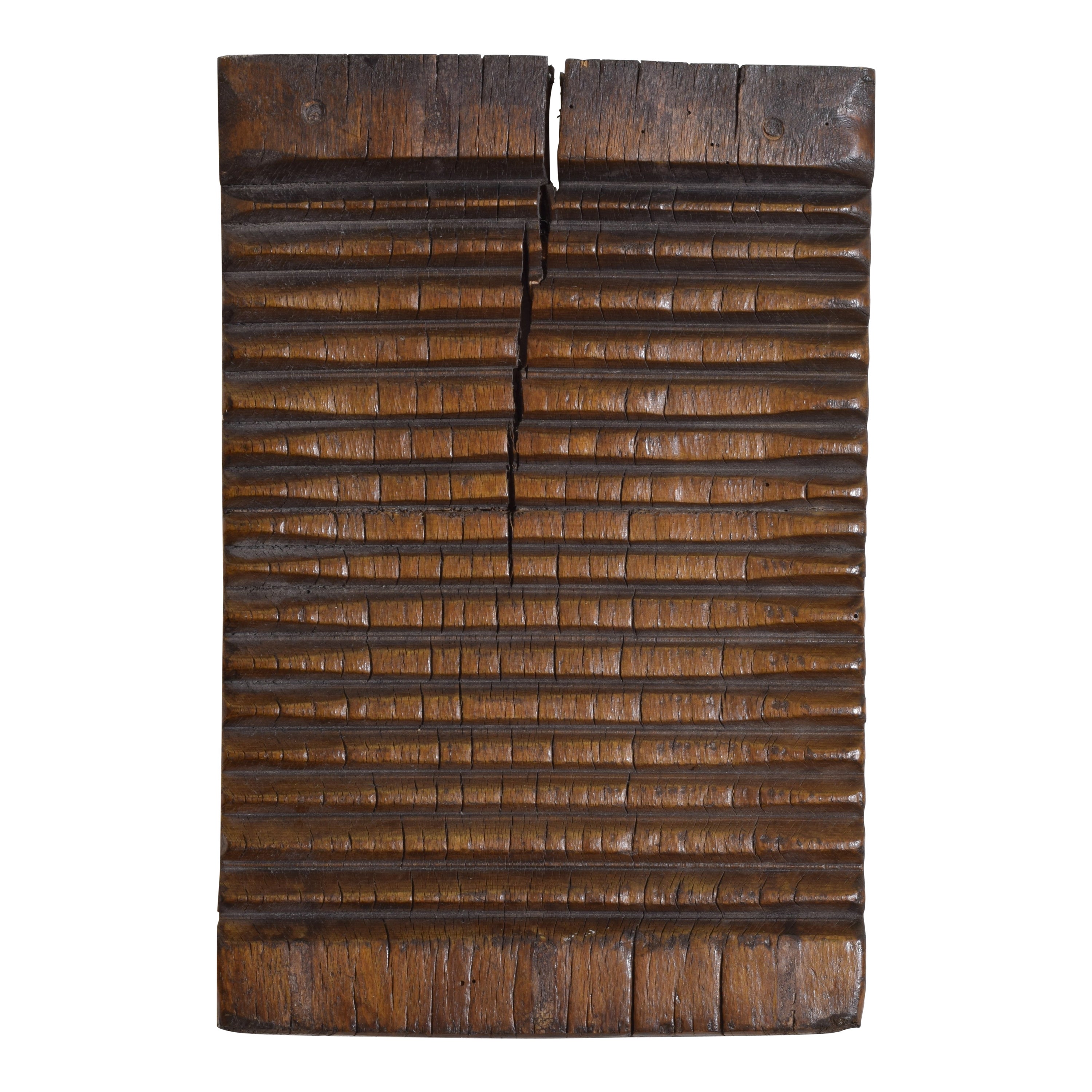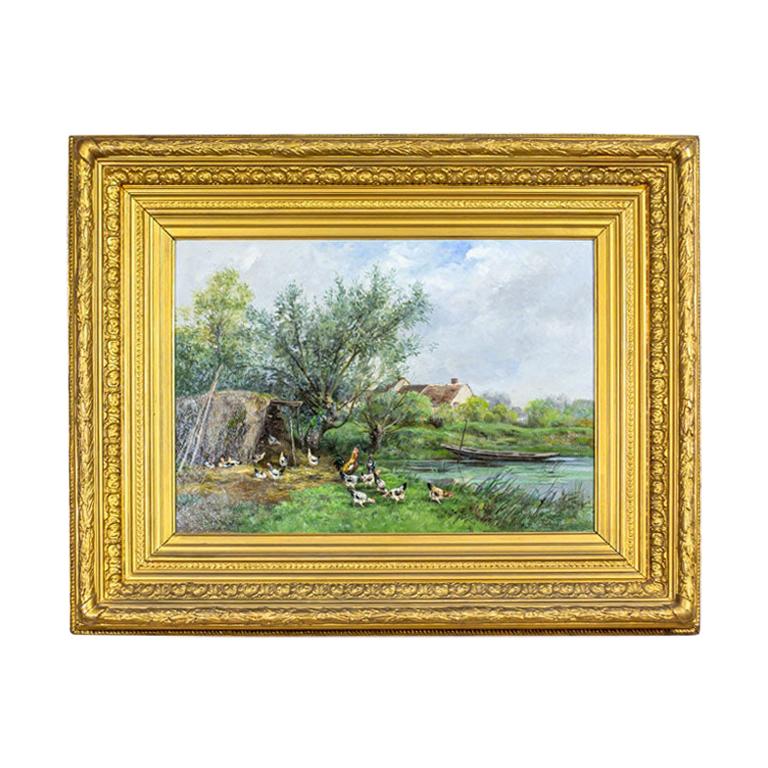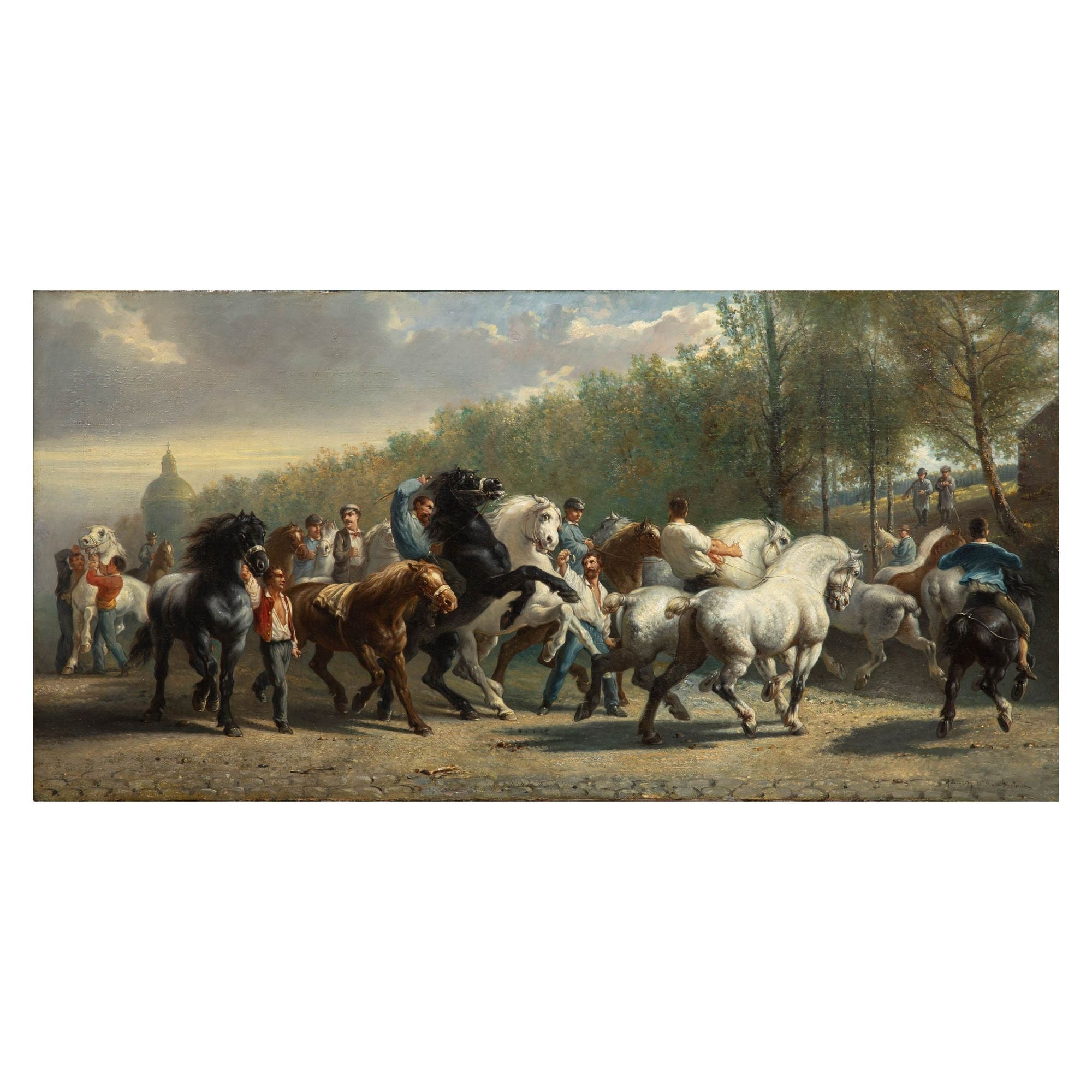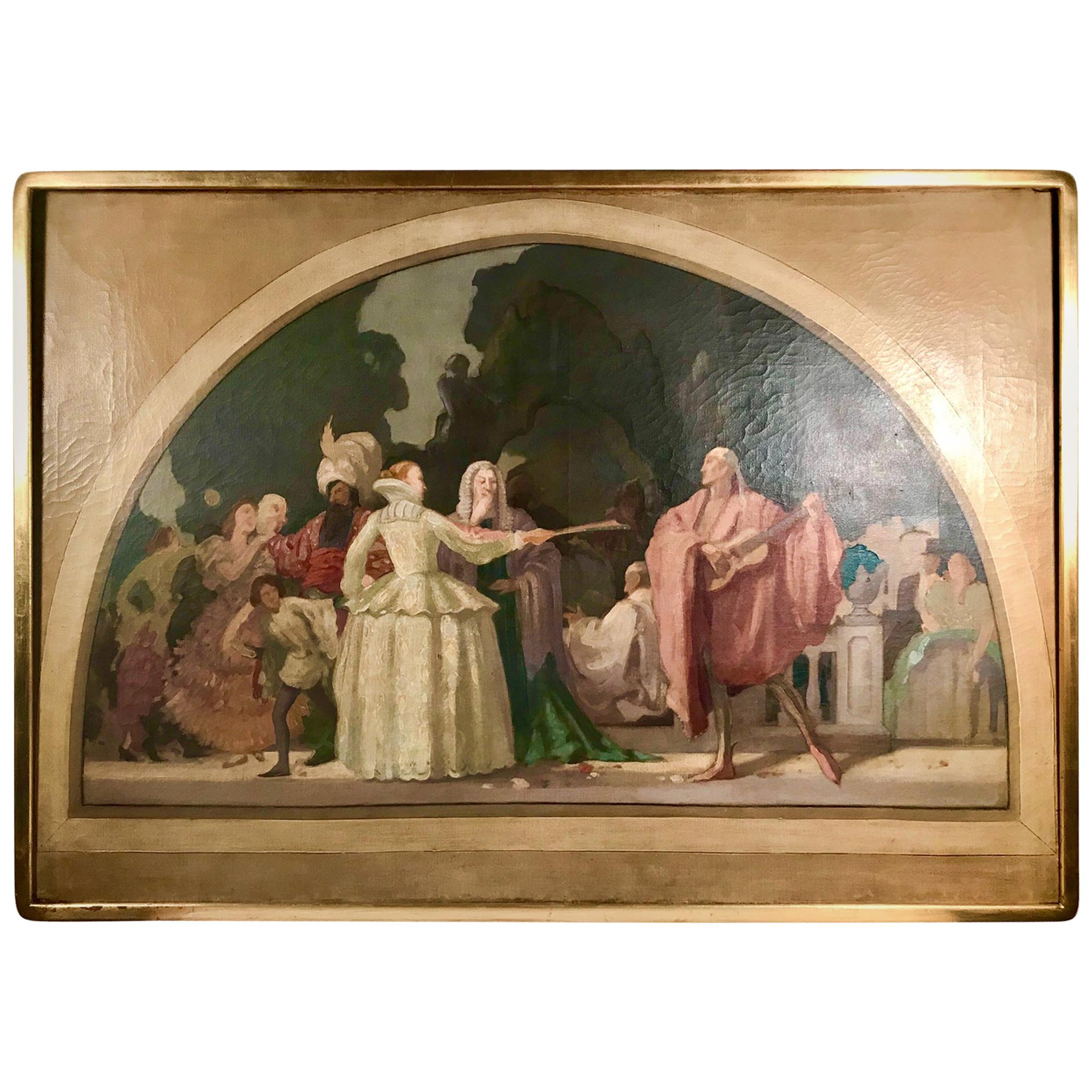Items Similar to "Back From the Fair" Attributed to J.F. Demay, France, 2nd quarter of the 19th C
Want more images or videos?
Request additional images or videos from the seller
1 of 5
"Back From the Fair" Attributed to J.F. Demay, France, 2nd quarter of the 19th C
About the Item
Scene from everyday life representing a crowd returning from the fair, attributed to J.F. Demay.
Born in 1798 in Mire court (Meurthe-et-Moselle Dept.), died in 1850 in Paris, Jean-Louis-Francois Demay was a painter specializing in genre scenes and landscapes. As a self-trained artist, Demay participated in the Paris Salon from 1827 until 1846. He then represented lively scenes depicting markets, fairs, festivals, and peasant life, at the time of the French Restoration, (1815-1830).
- Dimensions:Height: 15.91 in (40.4 cm)Diameter: 19.3 in (49 cm)
- Materials and Techniques:
- Place of Origin:
- Period:
- Date of Manufacture:Second Quarter of the 19th Century
- Condition:Minor losses. Relined.
- Seller Location:PARIS, FR
- Reference Number:
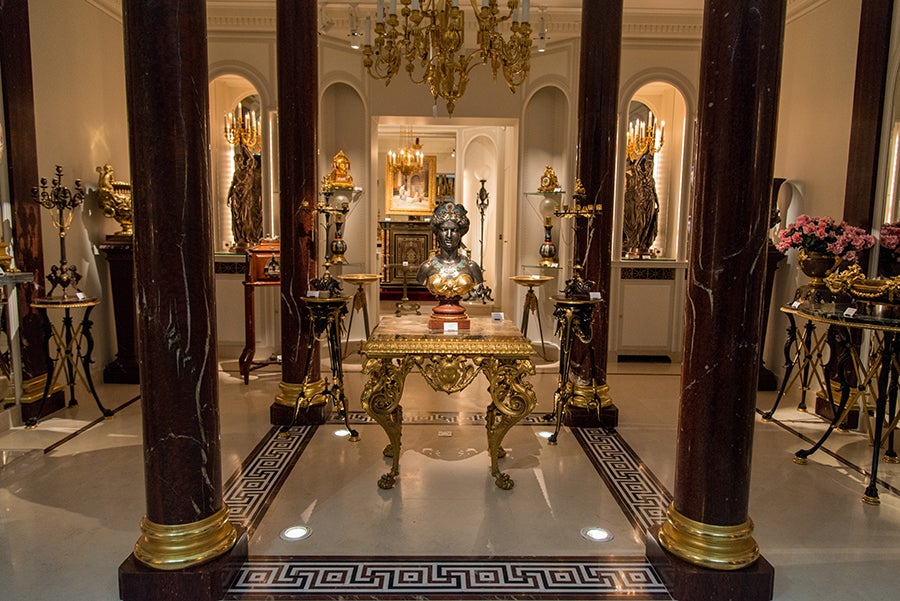
About the Seller
4.9
Vetted Seller
These experienced sellers undergo a comprehensive evaluation by our team of in-house experts.
Established in 1997
1stDibs seller since 2018
73 sales on 1stDibs
Typical response time: <1 hour
Associations
International Confederation of Art and Antique Dealers' Associations
- ShippingRetrieving quote...Ships From: PARIS, France
- Return PolicyA return for this item may be initiated within 7 days of delivery.
More From This SellerView All
- Splendid Giltwood Mirror, Italy, 2nd half of the 19th CenturyLocated in PARIS, FRAn important carved giltwood mirror with a rich frame beautifully decorated of arabesques. The top is richly ornamented with a cherub and surmounted by a mask on a spread shell. The ...Category
Antique Mid-19th Century Italian Wall Mirrors
MaterialsGiltwood
- Paintings "Courtly Love" and "Inconstant Love", French School, Late 19th CenturyBy Jean-Antoine WatteauLocated in PARIS, FRMeasurements with frames: Height 135 cm (53 in.), width 94 cm (37 in.) Magnificent pair of important paintings on the theme of “Fêtes galantes” and so dedicated to the art of sedu...Category
Antique Late 19th Century French Paintings
MaterialsCanvas
- Painting "The Round of the Nymphs", Signed Henry Picou, France, Circa 1870By Henri-Pierre PicouLocated in PARIS, FRSigned on the bottom right Henry Picou. Charming mythological scene representing a round of nymphs, symbol of fertility and benevolence, wearing crowns of flowers and dancing in the middle of a wheat field. They are accompanied by playful winged cupids flying around them and throwing flowers. Author of genre and portrait scenes, Henry Picou has mainly distinguished himself, in the neo-Greek movement of the second half of the 19th Century, in the representation of allegorical paintings thanks to his delicate and colorful touch. Born on July 27th, 1824 in Nantes and died on July 17th, 1895 in Paris, Henry-Pierre Picou is an history, portrait and genre scenes painter, who has distinguished himself in the Neo-greek movement. Entering at twelve years old in the workshop of the painter Paul Delaroche, he then follows Charles Gleyre’s teaching in the Ecole Royale des Beaux-Arts de Paris. In Paris, he becomes friend with young painters among which Jean-Léon Gérôme, Gustave Boulanger and Jean-Louis Hamon. This group, who is passionate about recent discoveries about Roman and Greek antiquity, starts exposing in the Salon in 1847, and Jean-Léon Gérôme’s painting, le Combat de coqs, awarded with a gold medal, allows them to be noticed and devotes Gérôme as the leader of this new Neo-greek movement. This artistic movement quickly becomes fashionable, also influencing the decorative arts and the architecture. Henry Picou wins the second prize of Rome in 1853 for his painting Jésus chassant les marchands du Temple, preserved today in the Ecole nationale supérieure des Beaux-Arts in Paris. When Neo-greek artists are not so popular anymore, Henry Picou devotes himself to a career as a portraitist and genre scene painter, and exposes to the Salon paintings...Category
Antique 1870s French Paintings
MaterialsCanvas
- Aubusson Tapestry "The Banquet of the Pacha", France, 19th CenturyBy Aubusson ManufactureLocated in PARIS, FRBeautiful wool and silk tapestry representing a banquet of a Pasha. While the guests eat, servants bring the dishes and musicians entertain the assembly. Tapestries were used to richly decorate a house and keep the heat inside a room by diminishing the cold radiation of the stones. It could be quickly and easily disassembled to be transported to another house. From a millefleurs decor at the beginning of the art of tapestry, the weavers have managed to increase the woven surfaces allowing the narrative unfolding of a story (biblical, mythological or literary stories) through hangings, set of tapestries on the same subject. The origins of Aubusson tapestry still remain uncertain, although some attribute its invention to Saracens who settled on the banks of the Creuse after their defeat at Poitiers in 732, while others believe it to be the fact that Louis 1...Category
Antique 19th Century French Tapestries
MaterialsWool, Silk
- Centerpiece "The Naiad", attributed to G. Denière, France, circa 1870By Guillaume DenièreLocated in PARIS, FRExceptional centerpiece in silvered and gilded bronze, composed of a naiad riding a dolphin, supporting a chiseled shell decorated with reeds, adorned with the head of a river god on its bow and on which a winged love blows in a conch. The whole rests on a pedestal decorated with dolphin heads and cut-out leathers, ending with a porphyry base with molded steps. Historical and artistic context Centers and naves of tables are attested in France from the Middle Ages in order to present spices and other condiments brought from distant lands around the Mediterranean or from the trade of the Silk Roads. The importance of their presence on prestigious tables will be confirmed throughout the decorative arts, evolving during the 19th century in centerpieces, becoming a central element of decoration. Here we find a true virtuosity in the composition and representation of the human figure which is reminiscent of the greatest artists of the Italian Renaissance. Indeed, the fluidity of the lines of the naiad can be compared to the nymph of Fontainebleau by Benvenuto Cellini preserved at the Louvre museum and dated 1545, while the naturalist representation of the marine setting refers to the work of Wenzel Jamnitzer...Category
Antique 1870s French Renaissance Revival Centerpieces
MaterialsMarble, Bronze
- Painting "The Music Lesson", French School, Circa 1840Located in PARIS, FRCharming pair of paintings representing young women in well-off interiors during their music lesson, one illustrating a singing lesson and the other a Cello lesson. The theme of the music lesson...Category
Antique 1840s French Paintings
MaterialsCanvas
You May Also Like
- Italian View of the Livorno Lighthouse, First Quarter of 19th CenturyLocated in CHItalian View of the Livorno Lighthouse, First Quarter of 19th Century This painting represents the view of the Livorno dock with the lighthouse in the background. The different details in this picture could identify it as a historical view. The first detail is the Heraldic coat of arms of the Medici family...Category
Antique Early 19th Century Italian Paintings
MaterialsCanvas
- A Belgian Double Sided Washboard in Walnut, 2nd quarter 19th centuryLocated in Atlanta, GAHand carved in walnut this well worn washboard utilizes both its sides, now best admired as a wall hangingCategory
Antique 1830s Belgian Neoclassical Wall-mounted Sculptures
MaterialsWalnut
- Portrait Of Young Woman Attributed To Natale Schiavoni 19th CenturyLocated in Badia Polesine, ROPortrait of a young woman, attributed to Natale Schiavoni Oil on canvas Epoch: 1840 Size: 86x118 cm with frame, 58x90 cm canvas only Condition: Very good condition Description: The p...Category
Antique 1840s Italian Romantic Paintings
MaterialsCanvas
- Landscape by Luis Remy Matifas, Fourth Quarter of the 19th CenturyLocated in Opole, PLWe present you a painting depicting the rural landscape, closed in a massive frame. This oil on canvas is signed by Luis Remy Matifas. It was painted in the late 19th century. Pr...Category
Antique Late 19th Century French Paintings
MaterialsCanvas
- Late 19th Century French Copy of Rosa Bonheur’s “Horse Fair” PaintingLocated in Shippensburg, PALATE 19TH CENTURY COPY OF ROSA BONHEUR'S "THE HORSE FAIR" Oil on canvas, signed lower right somewhat illegibly "A. Lionard (?) D' Rosa Bonheur" Item # 306TJZ21P A very nice late 91t...Category
Antique 19th Century French Romantic Paintings
MaterialsCanvas, Wood, Paint
- 19th Century French Painting Oil/Canvas Attributed to Pierre Puvis de ChavannesLocated in Vero Beach, FL19th century French painting oil/canvas attributed Pierre Puvis de Chavannes. Large preparatory study for a mural. It is painted in oil on canvas and it depicts a theatrical scene. De Chavannes’ greatest artistic contribution was the medium of mural painting. His biography states, “De Chavannes’ work proved a vital catalyst, as early modern art...Category
Antique Late 19th Century French Post-Modern Paintings
MaterialsCanvas
Recently Viewed
View AllMore Ways To Browse
French Quarter Painting
Painting Of French Quarter
Salon Giltwood
Antique Miror
Antique Mirors
French Miror
Antique Oil Paintings Art Deco
Girl Hanging On Wall
Gallery Easels
Kent Home
Regency Girls
Plaster Wall Decor
Vintage Furniture Az
Wall Art Jungle
Dolomites Furniture
Tiger Painting India
Rustic Wood Painting Frame
Antique Yard Decorations

